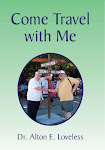 The Worst War on American Soil
The Worst War on American SoilOur first stop in Gettysburg was to visit the new Museum and Visitors center that contains a number of theaters, a large bookstore, and the museum of many of the war’s artifacts. Above is also a huge painting, one of only four in the United States that depicts the battle at Gettysburg.
I had a special interest in visiting the battlefield since I had gone to high school in Arkansas with Billy and JEB Stuart who were descendants of the famous confederate General James Ewell Brown (JEB) Stuart, who was known as the most famous cavalryman of the Civil War.
Being a student of JEB Stuart, please allow me to give a little history of the General and his life.
At the age of fourteen years James Stuart was placed at school in Wytheville , Virginia ; and in August, 1848, he entered Emory and Henry College (where I have conducted seminars in years past). During a revival of religion among the students he professed conversion, and joined the Methodist Church . Throughout his life he maintained a consistent Christian character. In April, 1850, James Stuart left Emory and Henry College , having obtained an appointment as cadet in the United States Military Academy at West Point where he gradated 13th in his class.
Ten years later, in 1859, he was confirmed in the Protestant Episcopal Church by Bishop Hawkes, in St. Louis . His mother was an Episcopalian, and had early instilled into him a love for her own church
A Virginia-born West Pointer (1854), Stuart was already a veteran of Indian fighting on the plains and of Bleeding Kansas when, as a first lieutenant in the 1st Cavalry, he carried orders for Robert E. Lee to proceed to Harpers Ferry to crush John Brown's raid.
His later appointments included: captain of Cavalry, CSA ( May 24, 186 1); colonel, 1st Virginia Cavalry (July 16, 1861); brigadier general, CSA (September 24, 1861); and major general, CSA July 25, 1862 ). His commands in the Army of Northern Virginia included: Cavalry Brigade (October 22, 1861 - July 28, 1862); Cavalry Division July 28, 1862 - September 9, 1863 ); temporarily Jackson's 2nd Corps (May 3-6, 1863); and Cavalry Corps (September 9, 1863 - May 11, 1864).
During Grant's drive on Richmond in the spring of 1864, Stuart halted Sheridan 's cavalry at Yellow Tavern on the outskirts of Richmond on May 11. In the fight he was mortally wounded. About noon , Thursday, President Davis visited his bedside, and spent some fifteen minutes in the dying chamber of his favorite chieftain. The President, taking his hand, said, "General, how do you feel?" He replied, "Easy, but willing to die, if God and my country think I have fulfilled my destiny and done my duty."
The General, with a mind perfectly clear, made dispositions to his staff of his personal effects. To Mrs. Robert E. Lee he directed that his golden spurs be given as a dying memento of his love and esteem of her husband. To his staff officers he gave his horses. To one of his staff, who was a heavy built man, he said, "You had better take the larger horse; he will carry you better." Other mementoes he disposed of in a similar manner. To his young son he left his glorious sword.
His worldly matters closed, the eternal interest of his soul engaged his mind. Turning to the Rev. Mr. Peterkin, of the Episcopal Church, and of which he was an exemplary member, he asked him to sing the hymn commencing --
"Rock of ages cleft for me,
Let me hide myself in thee,"
Joining in with all the voice his strength would permit. He then joined in prayer with the ministers. To the Doctor he again said, "I am going fast now; I am resigned; God's will done." Thus died General J.E.B. Stuart. General Stuart was thirty five years of age. He died in the rebel capital and is buried in Hollywood Cemetery there. Like his intimate friend, Stonewall Jackson, General Stuart soon became a legendary figure, ranking as one of the great cavalry commanders of America .
Among the pall bearers were Brigadier General John H. Winder, General George W. Randolph, General Joseph R. Anderson, Brigadier General Lawton and Commodore Forrest.
Among the congregation appeared President Davis, General Bragg, General Ransom, and other civic and military officials in Richmond .
Having studied much of the life of J.E.B. Stuart, I was deeply interested in viewing the entire battlefield so we boarded a double Decker bus and went to the front seat on the top level to be able to get good photographs. The guide was great and audio history was also played in various places that better covered the incidents and events of the area.
The 23 mile tour lasted better than two hours and was indeed enlightenment to me even though I had been a student of Civil War battles.
The losses at Gettysburg were the greatest of any battle in the Civil War. The Union lost 23,049 men, while the Confederacy lost 28,063. The Confederate population was unable to withstand such heavy casualties, and Lee's army was never able to launch another offensive invasion in Union territory. The defeat at Gettysburg , coupled with the surrender of Vicksburg on July 4th, ended Confederate hopes of European intervention in the war. Between 46,000 and 51,000 Americans were casualties in the three-day battle.
That November, President Lincoln used the dedication ceremony for the Gettysburg National Cemetery to honor the fallen and redefine the purpose of the war in his historic Gettysburg Address.
After, returning to the tour center, our friends and us, met at the old Gettysburg café for a remarkable meal.
”He hath delivered my soul in peace from the battle that was against me: for there were many with me.” --Psalm 55:18





No comments:
Post a Comment